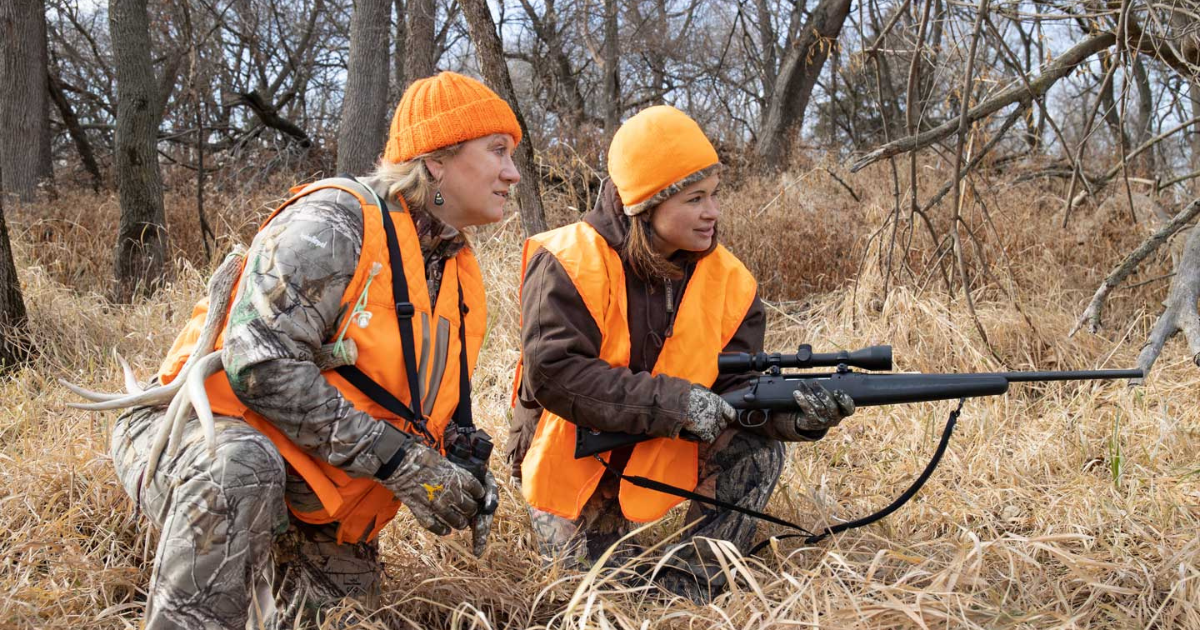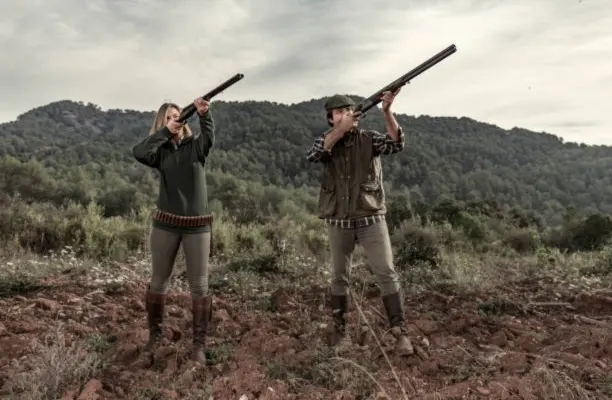Hunting is a time-honored tradition that requires not only skill and patience but also a commitment to safety and responsibility. When it comes to the tree stand hunting, bringing your firearm into position presents unique challenges that demand careful consideration. This article aims to provide a comprehensive guide on the essential steps to safely haul your firearm into a tree stand.
There are several methods for attaching a Haul line to a Firearm, each with its advantages and considerations.
Table of Contents
A. Brief overview of the importance of safely bringing a firearm into a tree stand
The act of hauling a firearm into a tree stand is a crucial step in the hunting process. It positions you for an optimal vantage point while presenting challenges that, if not addressed with care, could compromise safety. Understanding the importance of this process sets the stage for responsible hunting practices.
B. Emphasize the need for responsible hunting practices
Responsible hunting is not just about hitting your target; it’s about respecting the environment, wildlife, and, most importantly, the safety of yourself and others. Safely bringing a firearm into a tree stand is a key aspect of responsible hunting that every outdoors enthusiast should prioritize.
C. Mention the potential risks and challenges involved in hauling a firearm into a tree stand
Hauling a firearm into a tree stand introduces potential risks such as accidental discharges, falls, or damage to the firearm. Being aware of these challenges underscores the need for a systematic and cautious approach to ensure a safe and successful hunting experience.
Understanding Your Firearm
A. Know your specific firearm and its features
Before attempting to haul your firearm into a tree stand, it’s imperative to have a deep understanding of your weapon. Familiarize yourself with its weight, dimensions, and any unique features that may affect transport.
B. Check local regulations and guidelines for transporting firearms while hunting
Different regions have varying regulations regarding the transportation of firearms during hunting. Ensure compliance with local laws, obtain any necessary permits, and adhere to guidelines that promote safety and responsible firearm use.
C. Ensure that your firearm is unloaded before attempting to haul it into a tree stand
Always double-check that your firearm is unloaded before attempting to bring it into a tree stand. This simple yet crucial step significantly reduces the risk of accidents during the hauling process.
Choosing the Right Tree Stand
A. Discuss different types of tree stands and their features
There are various types of tree stands, each with its own set of features. Understand the differences between climbing stands, hang-on stands, and ladder stands to choose one that suits both your hunting style and the type of firearm you’ll be hauling.
B. Emphasize the importance of selecting a stable and secure tree stand
Stability is paramount when selecting a tree stand for firearm hauling. Ensure that your chosen stand is secure, stable, and capable of supporting the combined weight of both you and your firearm.
C. Consider the weight and size of your firearm when choosing a tree stand
Factor in the weight and size of your firearm when selecting a tree stand. Some stands may be better suited for heavier or larger weapons, so choose one that accommodates your specific firearm.
Essential Gear and Accessories
A. List and explain the necessary equipment for safely transporting a firearm
Certain gear and accessories are essential for safely transporting a firearm into a tree stand. This may include quality slings, holsters, or other carrying options designed specifically for firearms.
B. Discuss the use of slings, holsters, or other carrying options
Utilizing the right carrying option is crucial for both comfort and safety. Slings, holsters, or other specialized carrying devices help distribute the weight of the firearm and prevent accidental discharges or damage during transport.
C. Highlight the significance of quality straps, ropes, or hoisting systems
Invest in high-quality straps, ropes, or hoisting systems to securely lift your firearm into the tree stand. These tools play a pivotal role in ensuring a controlled and safe ascent.
Preparing Your Firearm for Transport
A. Double-check that the firearm is unloaded
Before lifting your firearm into the tree stand, reconfirm that it is unloaded. This step serves as a final safety check to prevent accidental discharges.
B. Remove any accessories or attachments that may snag during transport
Streamline the hauling process by removing any accessories or attachments that may snag on branches or other obstacles. This minimizes the risk of accidents and ensures a smoother ascent.
C. Ensure that the safety is engaged and the firearm is in a secure condition
Engage the safety on your firearm and ensure it is in a secure condition for transport. This precautionary measure adds an extra layer of safety throughout the hauling process.
Safe Hauling Techniques
A. Demonstrate proper techniques for lifting and securing the firearm
Proper lifting techniques are essential for a safe ascent. Lift the firearm in a controlled manner, keeping it close to your body to maintain balance and prevent swinging.
B. Discuss the importance of maintaining muzzle control
Muzzle control is non-negotiable when hauling a firearm into a tree stand. Always keep the muzzle pointed in a safe direction, away from yourself and others, to minimize the risk of accidents.
C. Provide tips for navigating obstacles while carrying the firearm
Navigating obstacles, such as branches or uneven terrain, requires careful attention. Take your time, plan your route, and make deliberate movements to avoid entanglements or falls.
Climbing the Tree Stand
A. Highlight the importance of a secure and controlled climb
A secure and controlled climb is essential for both your safety and the safety of your firearm. Ensure that every step is deliberate and that you maintain three points of contact with the tree at all times.
B. Discuss strategies for maintaining balance while ascending with a firearm
Maintaining balance during the climb is crucial, especially when carrying a firearm. Distribute your weight evenly, use handholds and footholds carefully, and take breaks when needed to regain composure.
C. Emphasize the need for patience and caution during the climbing process
Patience and caution are your allies during the climbing process. Rushing increases the risk of accidents, so take your time and focus on each step to ensure a safe ascent.
Setting Up in the Tree Stand
A. Safely secure the firearm in the tree stand
Once in the tree stand, secure the firearm in a designated and easily accessible location. Use built-in holders or additional straps to prevent any accidental drops or damage.
B. Discuss the importance of having a designated and accessible location for the firearm
Having a designated location for your firearm ensures it is readily available when needed and reduces the risk of mishandling. This strategic placement also contributes to a more organized and efficient hunting experience.
C. Double-check that the firearm is still unloaded before beginning the hunt
Before you begin the hunt, reconfirm that your firearm is unloaded. This final check ensures that you are ready to engage in responsible and safe hunting.
Conclusion
A. Summarize the key steps for hauling a firearm into a tree stand
Bringing a firearm into a tree stand requires careful planning and execution. Summarize the key steps: know your firearm, choose the right tree stand, use appropriate gear, prepare your firearm, employ safe hauling techniques, climb with caution, and set up in the tree stand responsibly.
B. Reiterate the importance of responsible hunting practices
Responsible hunting is not just a slogan; it’s a commitment to safety, conservation, and ethical practices. Reiterate the importance of adhering to these principles throughout the hunting experience.
C. Encourage readers to share their experiences and tips for safely transporting firearms
Encourage readers to share their experiences and tips for safely hauling firearms into tree stands. The exchange of knowledge and insights contributes to a community of responsible and informed hunters.
Frequently Asked Questions
1. Why is it important to unload my firearm before hauling it into a tree stand?
Unloading your firearm before hauling it into a tree stand is crucial for safety. It minimizes the risk of accidental discharges, ensuring a secure ascent and reducing the potential for injuries to yourself or others.
2. What type of tree stand is best suited for hauling a firearm, and why?
The best tree stand for hauling a firearm depends on various factors such as the type of firearm, personal preferences, and hunting environment. Generally, a stable and secure hang-on stand or ladder stand is recommended, as they provide a solid platform for both the hunter and the firearm.
3. Can I use a regular sling for carrying my firearm into a tree stand, or do I need a specialized one?
While a regular sling may offer some level of support, it’s advisable to use a specialized sling designed for firearms. These slings often have features such as quick-release mechanisms and adjustable straps, providing better stability and security during the hauling process.
4. How do I ensure that my firearm remains secure in the tree stand during the hunt?
To ensure your firearm remains secure in the tree stand, use built-in holders or additional straps designed for this purpose. Always double-check the security of your firearm before starting the hunt, and avoid any movements that may lead to accidental drops.
5. Are there any specific regulations regarding hauling firearms into tree stands that I should be aware of in my region?
Yes, it’s crucial to be aware of and comply with local regulations regarding the transportation of firearms while hunting. Check with local wildlife authorities or hunting agencies to understand specific guidelines, permits, or restrictions that may apply to safely hauling firearms into tree stands in your region.






